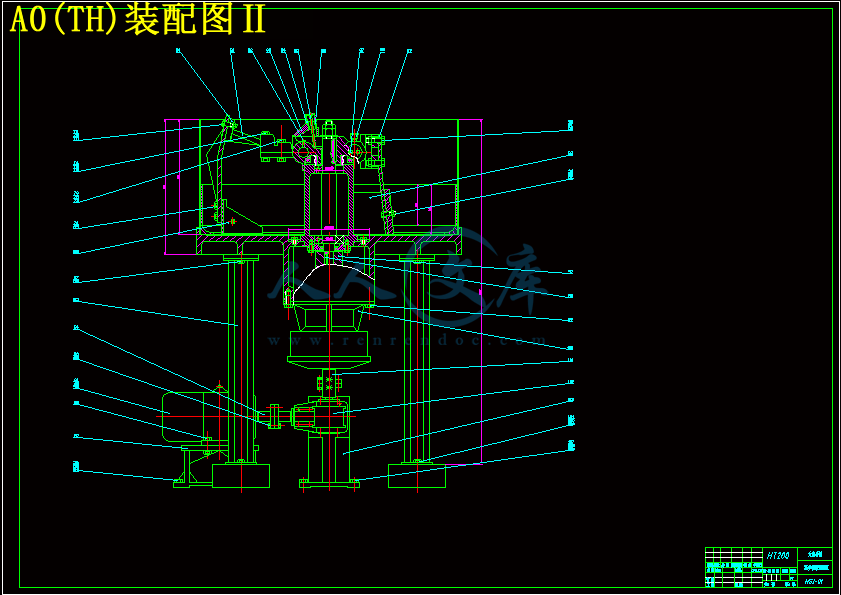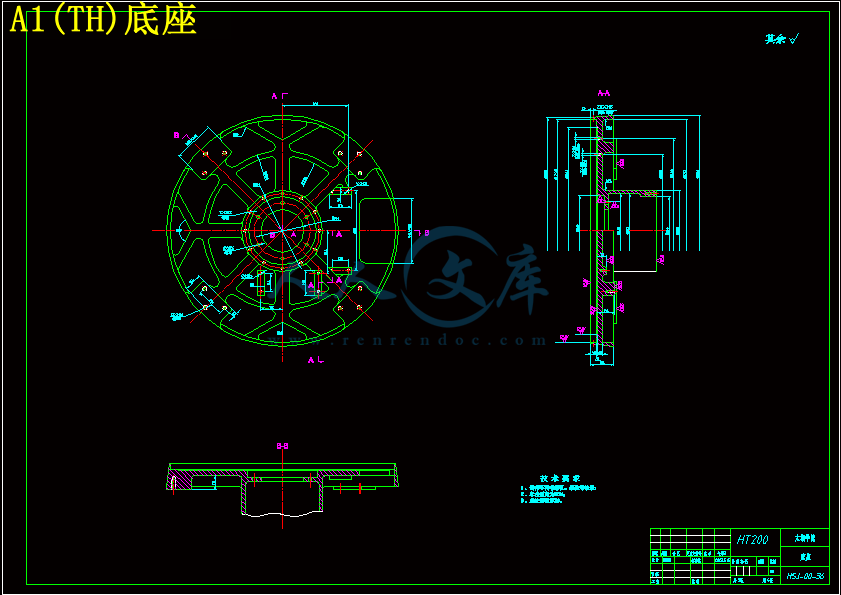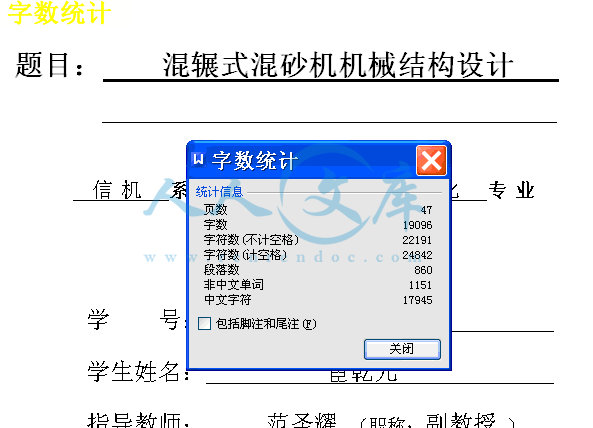摘 要
此次毕业设计是进行混辗式混砂机的机械结构设计,属于比较传统的机械结构类的设计。集思考,绘图,计算合三为一的设计形式叫做机械结构设计,机械结构设计是机械设计中涉及的问题最集中,最详细,工作量最大的阶段,这次设计主要包括了对混砂机的种类的叙述,混砂机传动部分的设计,砂门控制机构的选择还有控制部分的设计。
在这些部分中比较重要的是控制部分的设计,传动机构和砂门控制机构。控制部分设计采用了PLC控制。在传动设计中,首先对传动方案确立,然后在对传动部件的进行设计。在传动部件的设计中我主要设计其中的一级圆锥减速箱的中传动部件的设计,还有混砂机立式主轴的设计。在砂门控制部分,设计的要点在气缸的选择上。通过这些使新设计的混砂机在使用时更加平稳,适应性更强,效率高,而且具有结构紧凑,比例协调,美观大方,价格便宜的优点。
关键词:混砂机;机械结构;传动部件;减速箱
Abstract
This graduation design is the design of mechanical structure of mixed rolling type sand mixing machine. it is belong to the mechanical structure design of traditional. Design of mechanical structure is a set of thinking, drawing, design calculation process, it is the most involved problems in mechanical design and the most detailed, the workload of the largest stage, This design includes the types of sand mixing machine description, design of transmission machine parts, door control mechanism choice and control part of the design.
The important ones of them is the control part of the design, the transmission mechanism and sand control mechanism. The control part of the design use PLC .In the transmission design, we establish transmission scheme firstly, and then design the transmission parts. In the design of transmission part, I mainly design a conical gear box and sand mixing machine vertical spindle design. In the sand control part, the main point is the design of the cylinder which is the choice of the cylinder. Through these designs make new sand mixer more stable, more adaptable and high efficiency, and has the advantages of compact structure, proportion, beautiful generous, and cheap price.
Keywords: sand mixer; mechanical structure; transmission parts; reducer
目 录
摘 要 III
Abstract IV
目 录 V
第一章 绪论 1
1.1本课题的研究内容和意义 1
1.1.1 本课题的研究内容 1
1.1.2 本课题的研究意义 1
1.2国内外的发展概况 1
1.3本课题应达到的要求 2
第二章 混砂机的设计 3
2.1混砂机构的分类与选择 3
2.1.1 移动式双臂连续混砂机 3
2.1.2 固定式单臂混砂机 4
2.1.3 辗轮转子混砂机 4
2.1.4 转子混砂机 4
2.1.5 混碾式混砂机 6
2.2减速器的选择 7
2.2.1 减速器的分类 7
2.2.2 减速器的选择 11
2.3电动机的选择 11
2.4砂门控制机构 12
2.5控制电路部分设计 12
2.5.1 控制电路采用PLC的优点 13
2.5.2 控制部分的设计 13
第三章 传动部件的设计 16
3.1减速器圆锥齿轮传动的设计 16
3.2轴的设计 20
3.2.1 轴的功用及分类 20
3.2.2 一级减速箱轴的设计 21
3.2.3 轴承的校核 28
3.2.4 联轴器的选择 29
3.2.5 主轴的设计 31
第四章 气缸部件的选择 33
4.1气缸的特点 33
4.1.1 单作用气缸 33
4.1.2 双作用气缸 33
4.1.3 缓冲气缸 33
4.2气缸设计 34
4.2.1 计算气缸的钢径 34
4.2.2 活塞杆直径的计算 35
第五章 结论与展望 36
5.1 结论 36
5.2 不足之处与展望 36
致 谢 37
参考文献 38
附 录 39
第一章 绪论
1.1本课题的研究内容和意义
1.1.1 本课题的研究内容
本课题来源于宜兴某工程机械有限公司,主要内容是:此次毕业设计是进行混辗式混砂机的机械结构设计,主要包括了对混砂机的种类的叙述,混砂机传动部分的设计,砂门控制机构的选择还有控制部分的设计。
在这些主要部分是控制部分的设计,传动机构和砂门控制机构。控制部分设计采用了PLC控制。在传动设计中,首先对传动方案确立,然后在对传动部件的进行设计。在这次传动部件的设计中我主要设计东西是一级圆锥减速箱中的传动部件的设计,而且包括设计混砂机立式主轴。在砂门控制部分,设计的要点在气缸的选择上。通过这些使新设计的混砂机在使用时更加平稳,适应性更强,效率高,而且具有结构紧凑,比例协调,美观大方,价格便宜的优点。
1.1.2 本课题的研究意义
在现代铸造生产中,都有一个砂型供应问题。尤其跨入21纪元,高压高压造型机自动化级别的生产线的迅速发展,对型砂的质量以及数量都提出更加苛刻的要求。所以,型砂供应中的问题就显得更为突出。为了解决这个问题,目前世界上各国斗致力于研究和生产各种类型的高效率混砂机。所谓高效率混砂机应满足三方面的要求:(1) 在混砂机盘径一定时,能增加每次加料量;(2) 在保证型砂质量的前提下,能缩短混砂周期,提高混砂机的生产率;(3) 每次加料量和生产率提高后功率消耗应适当。我们通常用技术经济指数来全面衡量和评价一台混砂机。值表示每一千瓦时电力,每一分钟能混合的合格型砂数量。
本课题的意义在于对机械结构设计深入认识和对混砂机的加深了解。在我们进行毕业设计中我们会深入了解混砂机的工作原理,机械结构。也为我们以后工作和学习中积累经验。







 川公网安备: 51019002004831号
川公网安备: 51019002004831号